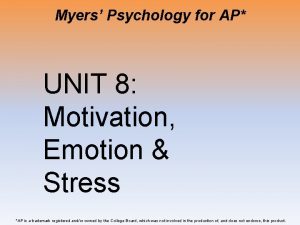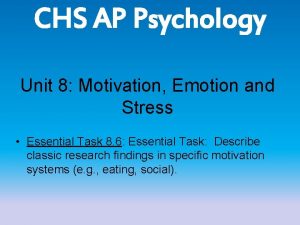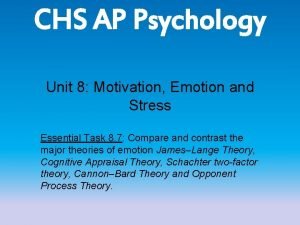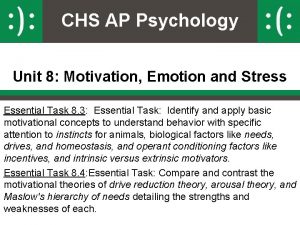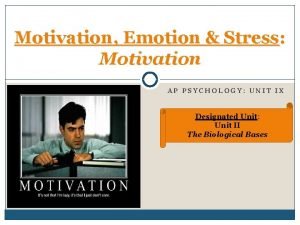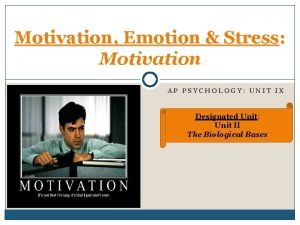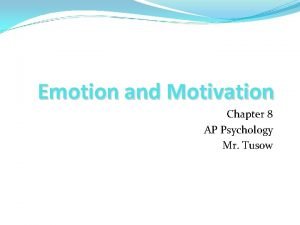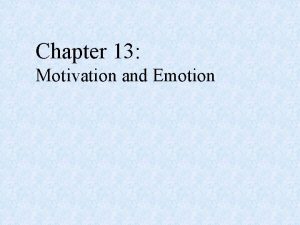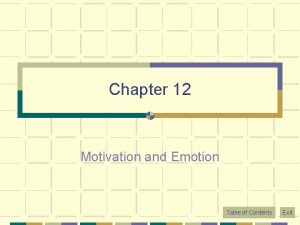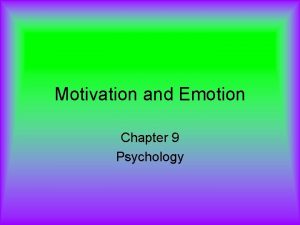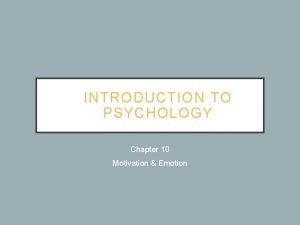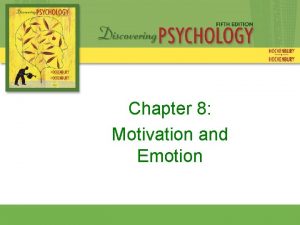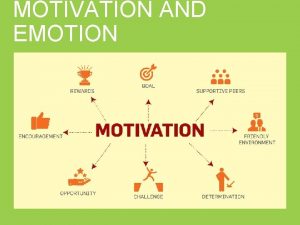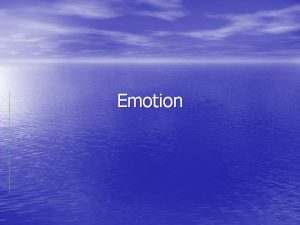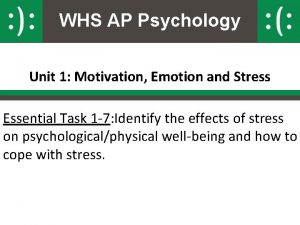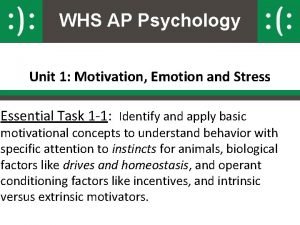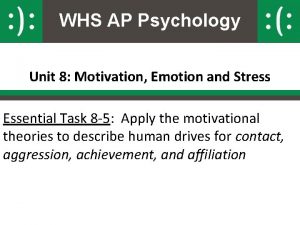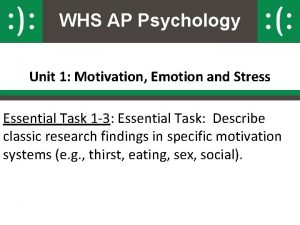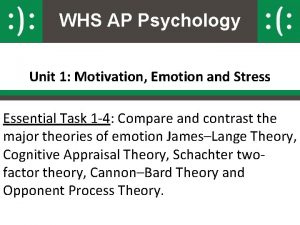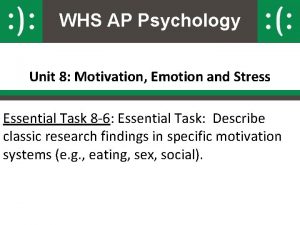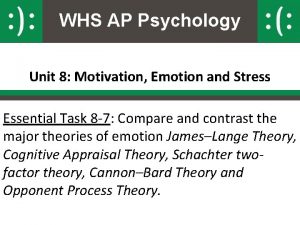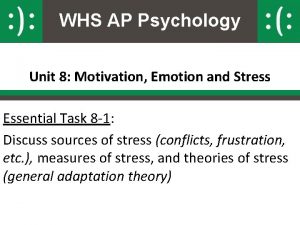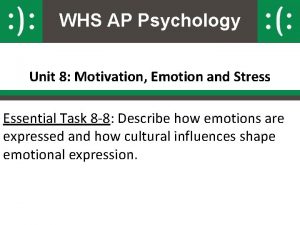WHS AP Psychology Unit 1 Motivation Emotion and













- Slides: 13

WHS AP Psychology Unit 1: Motivation, Emotion and Stress Essential Task 1 -2: Essential Task: Compare and contrast the motivational theories of drive reduction theory, arousal theory, and Maslow's hierarchy of needs detailing the strengths and weaknesses of each.

Drive Reduction Theory Arousal Theory Human Drives Intrinsic/ Extrinsic Motivation Theories Maslow’s Hierarchy of Needs Motivation & Emotion Explain complex motives Stress Effects (eating, aggression, achievement and sex) Theories of Emotion James-Lange Cannon-Bard Measures Sources Opponent Process Cognitive Appraisal Schachter two-factor Coping

Drive Reduction Theory Arousal Theory Human Drives Intrinsic/ Extrinsic Motivation We are here Maslow’s Hierarchy of Needs Motivation Theories Motivation & Emotion Explain complex motives Stress Effects (eating, aggression, achievement and sex) Theories of Emotion James-Lange Cannon-Bard Measures Sources Opponent Process Cognitive Appraisal Schachter two-factor Coping

Essential Task 1 -2: Outline • Motivational Theories – Drive Reduction Theory • • Strengths Weaknesses – Arousal Theory • • • Yerkes-Dodson Law Strengths Weaknesses – Maslow's Hierarchy of Needs • Strengths

Theories of Motivation 1. Drive-Reduction Theory 2. Arousal Theory 3. Hierarchy of Motives 5

Drive-Reduction Theory When the instinct theory of motivation failed it was replaced by the drivereduction theory. A physiological need creates an aroused tension state (a drive) that motivates an organism to satisfy the need (Hull, 1951). ion s n Te 6

Drive Reduction The physiological aim of drive reduction is homeostasis, the maintenance of a steady internal state – balance. The regulation of any aspect of body chemistry around a particular level Drive Reduction Food Empty Stomach Full (Food Deprived) Organism 7

Drive Reduction Theory • Strengths – Does a nice job explaining most primary drives • Falls apart with more complex behaviors/secondary drives – Sex and Secondary Drives. Outline

Optimum Arousal • Humans seek optimum levels of arousal. • Sometimes we want lots of arousal • Sometimes we want very low arousal • Some of us tend to want more and some of us tend to want less.

Arousal Theory • People do things in order to seek out an optimal level of arousal for a given moment • I want a high level or arousal – let’s do something epic tonight. • I want a low level of arousal – let’s stay in tonight. • I am bored with my life I need a new job. • I am stressed at work, let’s take a vacation. 10

Yerkes-Dodson Law – States that there is an optimal level of arousal for best performance on any task – The more complex the task, the lower the level of arousal that can be tolerated without interfering with performance

Hierarchy of Needs Abraham Maslow (1970) suggested that certain needs have priority over others. Physiological needs like breathing, thirst, and hunger come before psychological needs such as achievement, self-esteem, and the need for recognition. (1908 -1970) 12

Hierarchy of Needs 13
 Bulimia nervosa definition ap psychology
Bulimia nervosa definition ap psychology Unit 8 motivation emotion and stress
Unit 8 motivation emotion and stress Ap psychology unit 8 motivation and emotion test
Ap psychology unit 8 motivation and emotion test Unit 8 ap psychology
Unit 8 ap psychology Ap psychology motivation and emotion activities
Ap psychology motivation and emotion activities Incentive theory ap psychology
Incentive theory ap psychology Yerkes dodson law ap psychology example
Yerkes dodson law ap psychology example Psychology chapter 9 motivation and emotion
Psychology chapter 9 motivation and emotion Unit 8 motivation and emotion
Unit 8 motivation and emotion Chapter 13 motivation and emotion
Chapter 13 motivation and emotion Chapter 12 motivation and emotion
Chapter 12 motivation and emotion Intrinsic and extrinsic motivation
Intrinsic and extrinsic motivation Paul ekman universal facial expressions
Paul ekman universal facial expressions Display rules psychology
Display rules psychology
